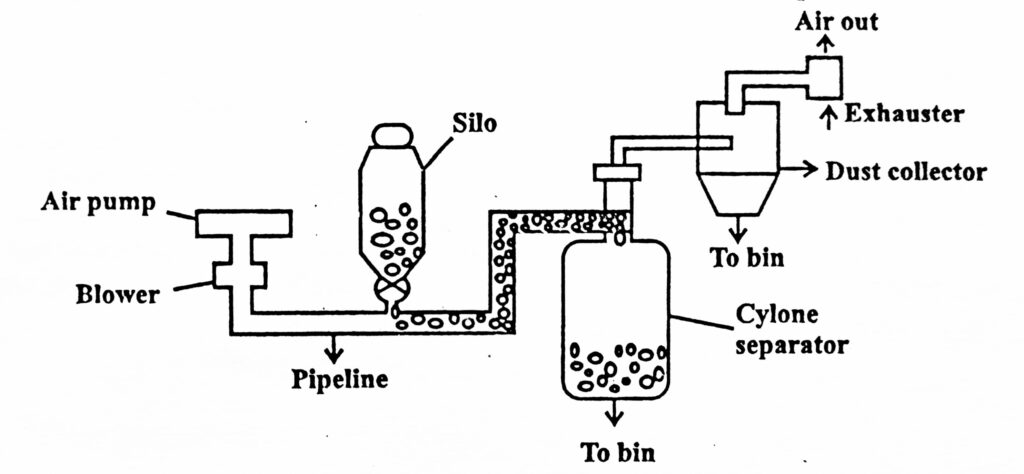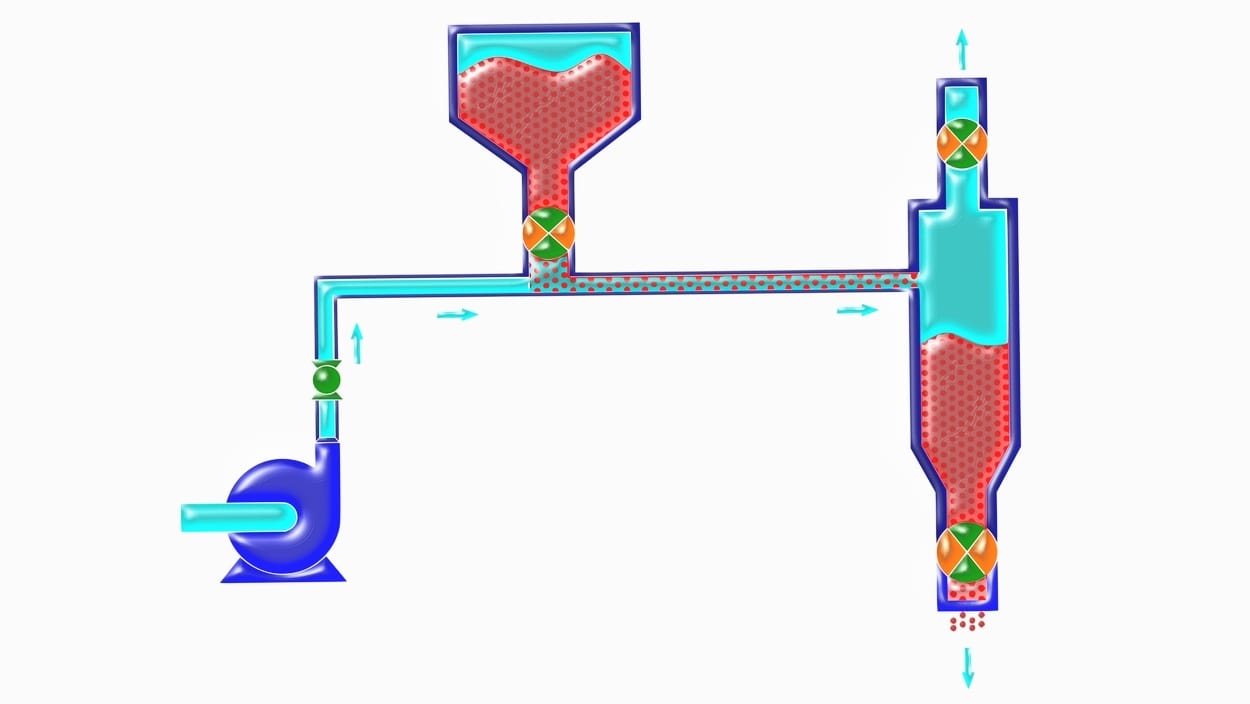The basic elements of the pneumatic conveyor are:
- Air supply (or vacuum) system
- Air slide and pipeline
- Feed arrangement
- Discharge arrangement (air and feed separation)
Table of Contents
Principle
When a high-velocity air is passed through a bed of solid particles, the individual particles are dragged by the air. Finally, they are suspended in the air. Such a system is known as a fluidized bed, which is described as a condition of fully suspended particles. In this condition. the suspension behaves like a dense fluid and can be transported from one point to another in processing plants, At the discharge end, the gas is separated and the solids are recovered.
Construction
The construction of a pneumatic conveyor is shown in Figure. Fans or cycloidal blowers are connected to the conveying system An air slide consists of a chute with a porous base through which air passes The path of material travel may vary from a few metres to several hundred metres. The conveyor mechanism can be operated for horizontal and vertical distances. The material supply (feed) is connected to the air slide through a rotary feeder valve The other end of the pipeline is connected to a cyclone separator.

Working
The cycloidal blowers (or fans) produce air at a pressure of about 7.0 kilopascals. This air is passed through the air slide at the rate of 1.5 metres per minute into the pipeline. During this process, the rotary feeder valve rotates and allows the feed to enter the pipeline. These sols e suspended in a stream of air in a fluidised state until it reaches the receiving end. The material is then admitted to a cyclone separator to remove large particles and fine particles if any. The large panels are collected into the bin. The fine particles are trapped in a bag filter. The gas can be recycled to the blower inlet in a closed system to save valuable gas. These systems are used for free-flowing materials.
For the proper design and satisfactory operation of pneumatic conveying. it is necessary to know about the characteristics of powders such as density particle size distribution, cohesiveness, angle of friction, angle of repose and fluidization.
Applications:
- The pneumatic conveyor is the most important handling system in the chemical industry
- It is used in the formulation of powdered insufflations.
- Generates, light and bulky materials such as grains can be transported easily
- The pneumatic conveyor is used for handling unpleasant and injurious (toxic materials, since it is a closed system.
- Powders containing poisonous constituents can be transported.
- Fine powders and pellets having the size up to 6.0 millimetres and bulk densities from 16 to 3000 kg per metre cube can be handled by a pneumatic conveyor.
Advantages:
- While conveying the material, the path may involve many turns: and lifts. In such cases, other types of conveying become costly.
- The pneumatic conveyor is economical compared to other types of conveyors.
- Friction losses are small. because there is no movement of mechanical parts.
Disadvantages:
- The pneumatic conveyor needs more power than other types of conveyor systems.
- Erosion of the internal surface of the vessel and attrition of solids may take place.
- Uneven contact between gas and solids is observed.
Make sure you also check our other amazing Article on : Screw Conveyor
